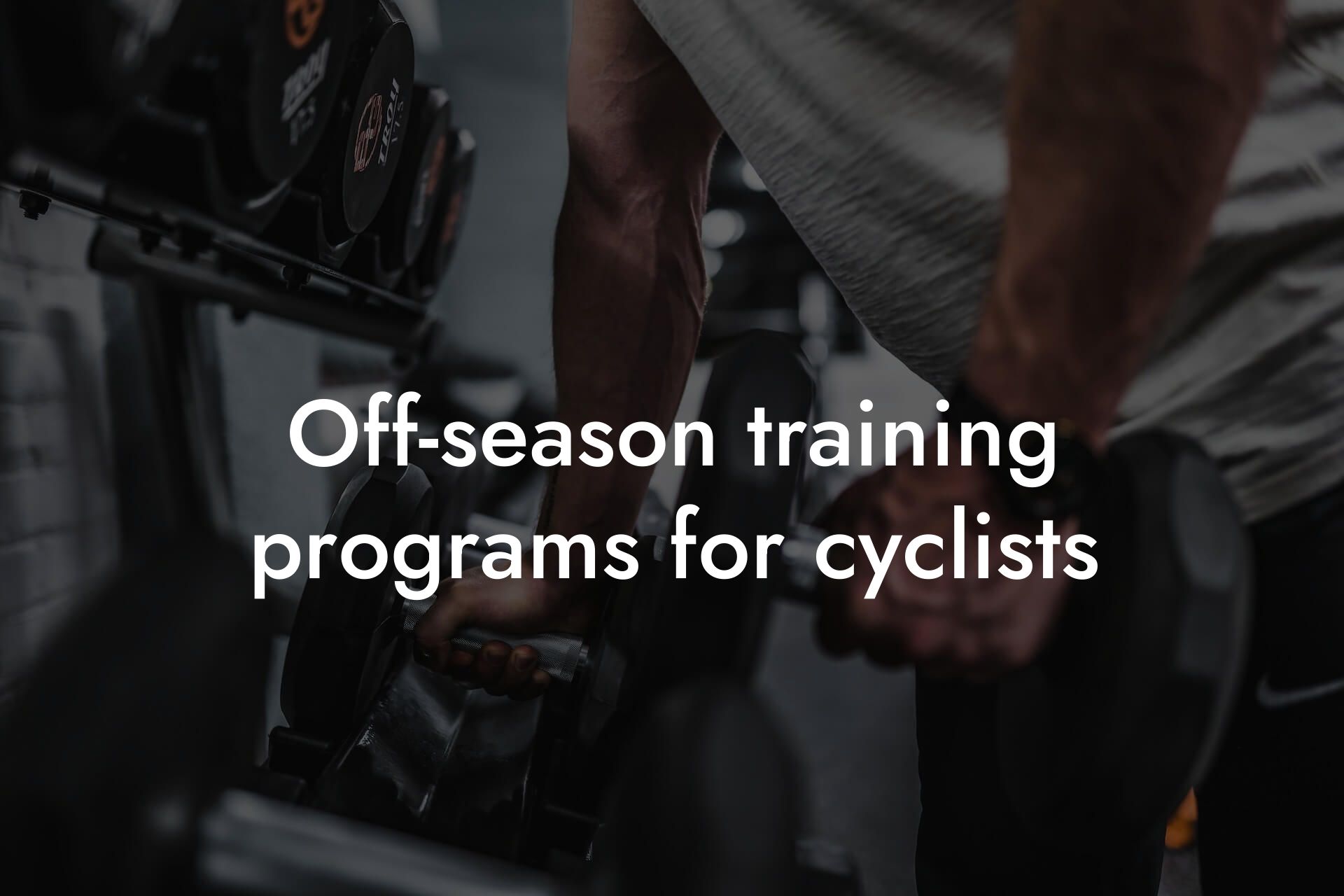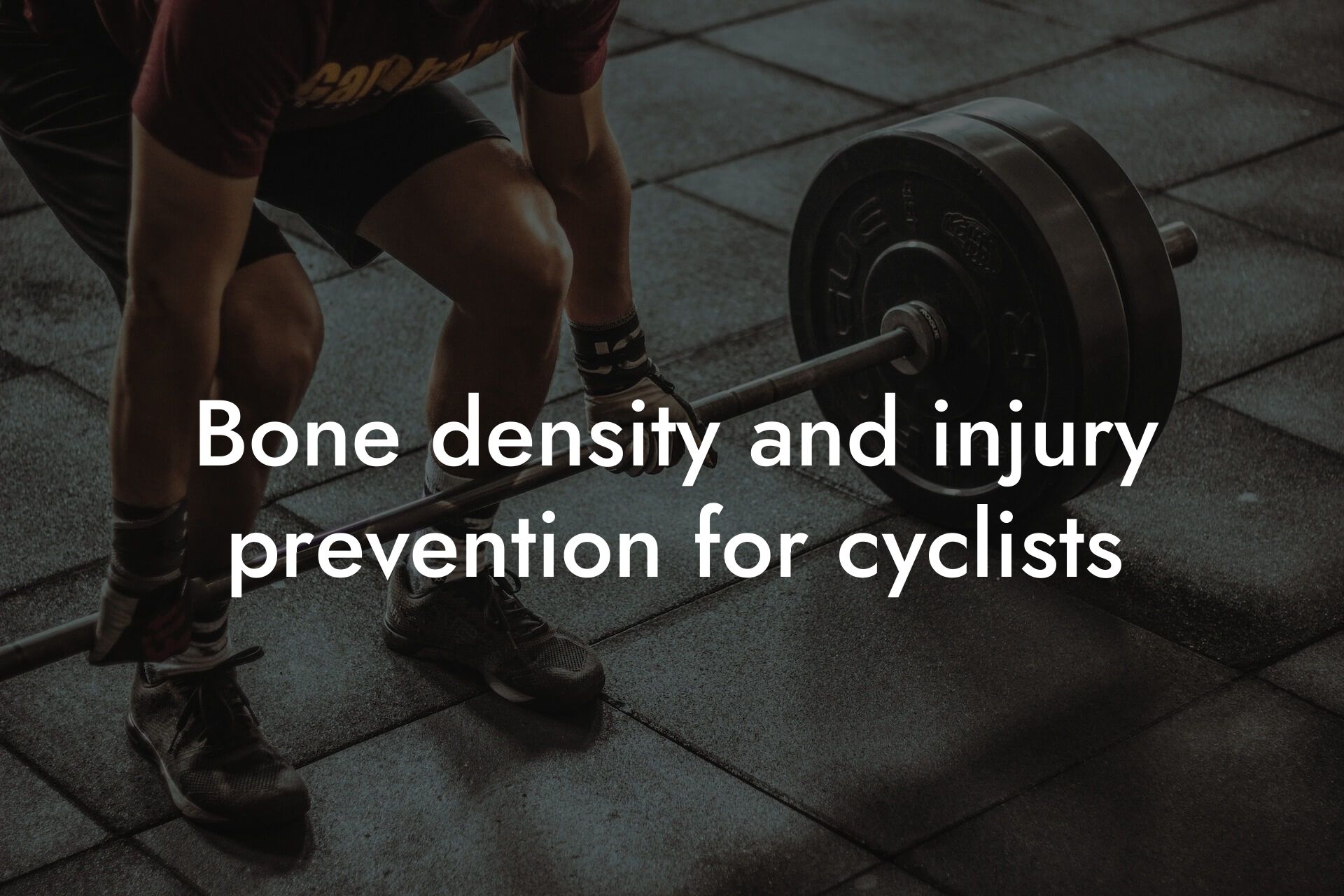As a cyclist, you understand the importance of having a high power-to-weight ratio. This means being able to generate a significant amount of power relative to your body weight. A higher power-to-weight ratio can give you a competitive edge, allowing you to climb faster, accelerate quicker, and maintain a higher speed over longer distances. One of the most effective ways to improve your power-to-weight ratio is by reducing your body fat percentage.
Table of Contents
- The Impact of Excess Body Fat on Cycling Performance
- How to Measure Body Fat Percentage
- Setting Realistic Goals for Body Fat Reduction
- Nutrition Strategies for Reducing Body Fat
- Training Strategies for Reducing Body Fat
- Supplements and Ergogenic Aids for Reducing Body Fat
- Monitoring Progress and Avoiding Plateaus
- Frequently Asked Questions
The Impact of Excess Body Fat on Cycling Performance
Carrying excess body fat can significantly hinder your cycling performance. Here are just a few reasons why:
Excess body fat increases your overall weight, which means you have to work harder to propel yourself forward. This can lead to increased energy expenditure, fatigue, and decreased endurance. Additionally, excess body fat can also affect your aerodynamics, making it more difficult to cut through the air and maintain a high speed.
Furthermore, excess body fat can also impact your power output. When you're carrying extra weight, you have to generate more power to overcome the added resistance. This can be particularly challenging when climbing or sprinting, where every watt counts.
How to Measure Body Fat Percentage
Before you can start working on reducing your body fat percentage, you need to know where you stand. There are several ways to measure body fat percentage, including:
Dual-Energy X-ray Absorptiometry (DEXA) scans, which provide a highly accurate measurement of body fat percentage. This is the method used by Tano Performance Group, providing a comprehensive body assessment that includes bone density, muscle mass, and body fat percentage.
Hydrostatic weighing, which involves measuring your weight while submerged in water. This method is also highly accurate but can be less accessible than DEXA scans.
Skinfold measurements, which involve pinching your skin at specific points to measure the thickness of your subcutaneous fat. While this method is less accurate than DEXA scans or hydrostatic weighing, it can still provide a good estimate of body fat percentage.
Setting Realistic Goals for Body Fat Reduction
When it comes to reducing body fat percentage, it's essential to set realistic goals. Aim to lose 0.5-1% body fat per week for a sustainable and healthy weight loss. This may seem slow, but it's a more maintainable pace that will help you achieve long-term results.
For cyclists, a healthy body fat percentage ranges from 10-15% for men and 15-20% for women. However, the ideal body fat percentage will vary depending on your individual goals, age, and fitness level.
Nutrition Strategies for Reducing Body Fat
When it comes to reducing body fat percentage, nutrition plays a critical role. Here are some evidence-based strategies to help you get started:
Create a calorie deficit by eating fewer calories than you burn. Aim for a daily calorie deficit of 500-1000 calories to promote weight loss.
Focus on whole, unprocessed foods like lean proteins, complex carbohydrates, and healthy fats. Avoid sugary drinks, fast food, and processed snacks.
Increase your protein intake to 1.6-2.2 grams per kilogram of body weight. This will help you maintain muscle mass while losing fat.
Incorporate healthy fats like avocado, nuts, and olive oil into your diet. These foods are rich in antioxidants and can help support hormone function.
Training Strategies for Reducing Body Fat
In addition to nutrition, training also plays a critical role in reducing body fat percentage. Here are some training strategies to help you get started:
Incorporate high-intensity interval training (HIIT) into your routine. This involves short bursts of high-intensity exercise followed by periods of rest. HIIT has been shown to be effective for burning fat and improving cardiovascular fitness.
Increase your endurance training by incorporating longer rides at a moderate intensity. This will help you build cardiovascular fitness and burn fat over a longer period.
Strength train to build muscle mass. This will help you maintain muscle while losing fat, which is essential for maintaining power output.
Supplements and Ergogenic Aids for Reducing Body Fat
While nutrition and training are the foundation of reducing body fat percentage, supplements and ergogenic aids can also play a role. Here are some evidence-based options:
Caffeine: This stimulant can help increase fat burning and improve exercise performance. Aim for 3-6 milligrams per kilogram of body weight 30 minutes before exercise.
Green tea extract: This supplement has been shown to increase fat burning and improve insulin sensitivity. Aim for 250-500 milligrams per day.
Conjugated linoleic acid (CLA): This fatty acid has been shown to reduce body fat percentage and improve exercise performance. Aim for 3-6 grams per day.
Monitoring Progress and Avoiding Plateaus
When it comes to reducing body fat percentage, it's essential to monitor your progress and avoid plateaus. Here are some tips to help you stay on track:
Regularly track your body fat percentage using a DEXA scan or other measurement method.
Monitor your power output and endurance performance to ensure you're not losing muscle mass.
Adjust your nutrition and training plan as needed to avoid plateaus.
Seek support from a coach, nutritionist, or training group to help you stay motivated and accountable.
Frequently Asked Questions
What is the ideal body fat percentage for cyclists?
For cyclists, an ideal body fat percentage can vary depending on the individual's goals, age, and sex. However, a general guideline is to aim for a body fat percentage between 10-15% for men and 15-20% for women. This range allows for a good balance between power output and body composition.
Why is reducing body fat important for cycling performance?
Reducing body fat is important for cycling performance because it improves power-to-weight ratio. Excess body fat can slow you down and decrease your overall efficiency on the bike. By reducing body fat, you can increase your power output relative to your body weight, making you a more efficient and faster cyclist.
How does body fat affect power-to-weight ratio?
Body fat affects power-to-weight ratio by increasing your overall body weight without contributing to your power output. This means that for every kilogram of excess body fat, you need to produce more power to maintain the same speed. By reducing body fat, you can maintain the same power output while decreasing your overall body weight, resulting in a better power-to-weight ratio.
What are the benefits of a better power-to-weight ratio in cycling?
A better power-to-weight ratio can bring several benefits to cyclists, including increased speed, improved climbing ability, and enhanced overall performance. It can also reduce fatigue and improve endurance, allowing you to ride longer and harder without getting tired.
How can I measure my body fat percentage?
There are several ways to measure body fat percentage, including skinfold measurements, bioelectrical impedance analysis (BIA), and dual-energy X-ray absorptiometry (DXA). Skinfold measurements involve pinching your skin at specific points to measure the thickness of your subcutaneous fat. BIA uses a device to send an electrical current through your body to estimate body fat percentage. DXA is a more accurate method that uses X-rays to measure bone density and body composition.
What is the best way to reduce body fat for cycling?
The best way to reduce body fat for cycling is through a combination of a healthy diet and regular exercise. Focus on consuming a balanced diet that is high in protein, moderate in complex carbohydrates, and low in fat. Aim to create a calorie deficit by eating fewer calories than you burn, and incorporate high-intensity interval training (HIIT) and strength training into your workout routine.
How long does it take to see results from reducing body fat?
The time it takes to see results from reducing body fat can vary depending on individual factors, such as starting body fat percentage, diet, and exercise routine. However, with a consistent and well-planned approach, you can start to see noticeable results in as little as 6-8 weeks.
What role does nutrition play in reducing body fat for cycling?
Nutrition plays a critical role in reducing body fat for cycling. A well-planned diet can help you create a calorie deficit, which is necessary for weight loss. Focus on consuming whole, unprocessed foods, including lean proteins, complex carbohydrates, and healthy fats. Avoid sugary drinks and processed snacks that can hinder your progress.
How can I stay motivated to reduce body fat?
Staying motivated to reduce body fat can be challenging, but there are several strategies that can help. Set specific, measurable, and achievable goals, and track your progress regularly. Find a workout buddy or join a cycling group to provide accountability and support. Celebrate your successes, no matter how small, and don't be too hard on yourself if you encounter setbacks.
Can I reduce body fat too quickly?
Yes, it is possible to reduce body fat too quickly. Crash dieting or extreme calorie restriction can lead to muscle loss, decreased power output, and a range of negative health consequences. Aim to lose 0.5-1 kg per week for a sustainable and healthy rate of weight loss.
How does reducing body fat affect bone density?
Reducing body fat can have both positive and negative effects on bone density. While excessive body fat can put additional stress on your bones, leading to decreased bone density, rapid weight loss can also lead to bone loss. It's essential to maintain a healthy balance between body fat and bone density by incorporating strength training and calcium-rich foods into your diet.
Can I reduce body fat and build muscle at the same time?
Yes, it is possible to reduce body fat and build muscle at the same time. This process is known as body recomposition. To achieve body recomposition, focus on a calorie-controlled diet that provides adequate protein for muscle growth and repair. Incorporate strength training exercises into your workout routine, and prioritize rest and recovery to allow your muscles to grow and adapt.
How does reducing body fat affect my overall health?
Reducing body fat can have numerous benefits for overall health, including decreased risk of chronic diseases, such as heart disease, type 2 diabetes, and certain types of cancer. It can also improve mental health, increase energy levels, and enhance overall well-being.
What are some common mistakes to avoid when trying to reduce body fat?
Some common mistakes to avoid when trying to reduce body fat include crash dieting, extreme calorie restriction, and neglecting strength training. It's also important to avoid fad diets and quick fixes, and instead focus on making sustainable lifestyle changes that promote long-term weight loss and overall health.
How can I maintain my reduced body fat percentage?
Maintaining a reduced body fat percentage requires ongoing effort and commitment. Focus on making healthy lifestyle choices, including a balanced diet and regular exercise, and track your progress regularly. Be patient and flexible, and make adjustments as needed to maintain your desired body composition.
Can I reduce body fat through cycling alone?
While cycling can be an effective way to burn calories and improve cardiovascular fitness, it may not be enough to reduce body fat on its own. A comprehensive approach that includes a healthy diet and strength training is often necessary to achieve significant weight loss and improve body composition.
How does reducing body fat affect my cycling performance in different weather conditions?
Reducing body fat can improve cycling performance in different weather conditions by increasing power output and reducing wind resistance. In hot weather, a lower body fat percentage can help improve heat dissipation and reduce the risk of heat-related illnesses. In cold weather, a lower body fat percentage can make you more susceptible to cold temperatures, so it's essential to dress appropriately and stay warm.
Can I reduce body fat and still enjoy my favorite foods?
Yes, it is possible to reduce body fat and still enjoy your favorite foods. The key is to practice moderation and portion control. Allow yourself the occasional indulgence, but focus on making healthy choices most of the time. Find healthier alternatives to your favorite foods, and incorporate them into your diet in moderation.
How does reducing body fat affect my mental health and confidence?
Reducing body fat can have a significant impact on mental health and confidence. By achieving your weight loss goals, you can experience increased self-esteem, improved body image, and enhanced overall confidence. This can translate to other areas of your life, including your relationships, career, and overall well-being.
What are some common myths about reducing body fat for cycling?
Some common myths about reducing body fat for cycling include the idea that you need to be extremely lean to be fast, that you can spot reduce body fat, and that extreme calorie restriction is necessary for weight loss. These myths can be misleading and may not be supported by scientific evidence. Instead, focus on making sustainable lifestyle changes that promote overall health and well-being.
How can I get support and guidance to reduce body fat?
There are several ways to get support and guidance to reduce body fat, including working with a registered dietitian or personal trainer, joining a cycling group or online community, and seeking advice from a healthcare professional. You can also consult with a coach or mentor who has experience in helping cyclists achieve their weight loss goals.
Here are some related articles you might love...
- Off-season training programs for cyclists
- Bone density and injury prevention for cyclists
- Using DEXA scans to monitor cyclist health and performance
- Recovery strategies for cyclists after intense races
- Nutrition tips for endurance during long cycling races
- Strength training for cyclists to improve power output
- The importance of body composition in cycling performance
- The role of muscle mass in cycling endurance
- Hydration and nutrition for optimal cycling performance
Zak Faulkner
Zak Faulkner is a leading authority in the realm of physical health and body composition analysis, with over 15 years of experience helping professionals optimise their fitness and well-being. As one the experts behind Tano Performance Group, Zak has dedicated his career to providing in-depth, science-backed insights that empower clients to elevate their physical performance and overall health.
With extensive knowledge of DEXA technology, Zak specializes in delivering comprehensive body assessments that offer precise data on body fat, muscle mass, bone density, and overall physique. His expertise enables individuals to make informed decisions and achieve their fitness goals with accuracy and confidence. Zak’s approach is rooted in a deep understanding of human physiology, combined with a passion for helping clients unlock their full potential through personalised strategies.
Over the years, Zak has earned a reputation for his commitment to excellence, precision, and client-focused service. His guidance is trusted by top professionals who demand the best when it comes to their health. Whether advising on fitness programs, nutritional strategies, or long-term wellness plans, Zak Faulkner’s insights are a valuable resource for anyone serious about taking their health and fitness to the next level.
At Tano Performance Group, Zak continues to lead our Content Team revolutionising how professionals approach their physical health, offering unparalleled expertise that drives real results.




